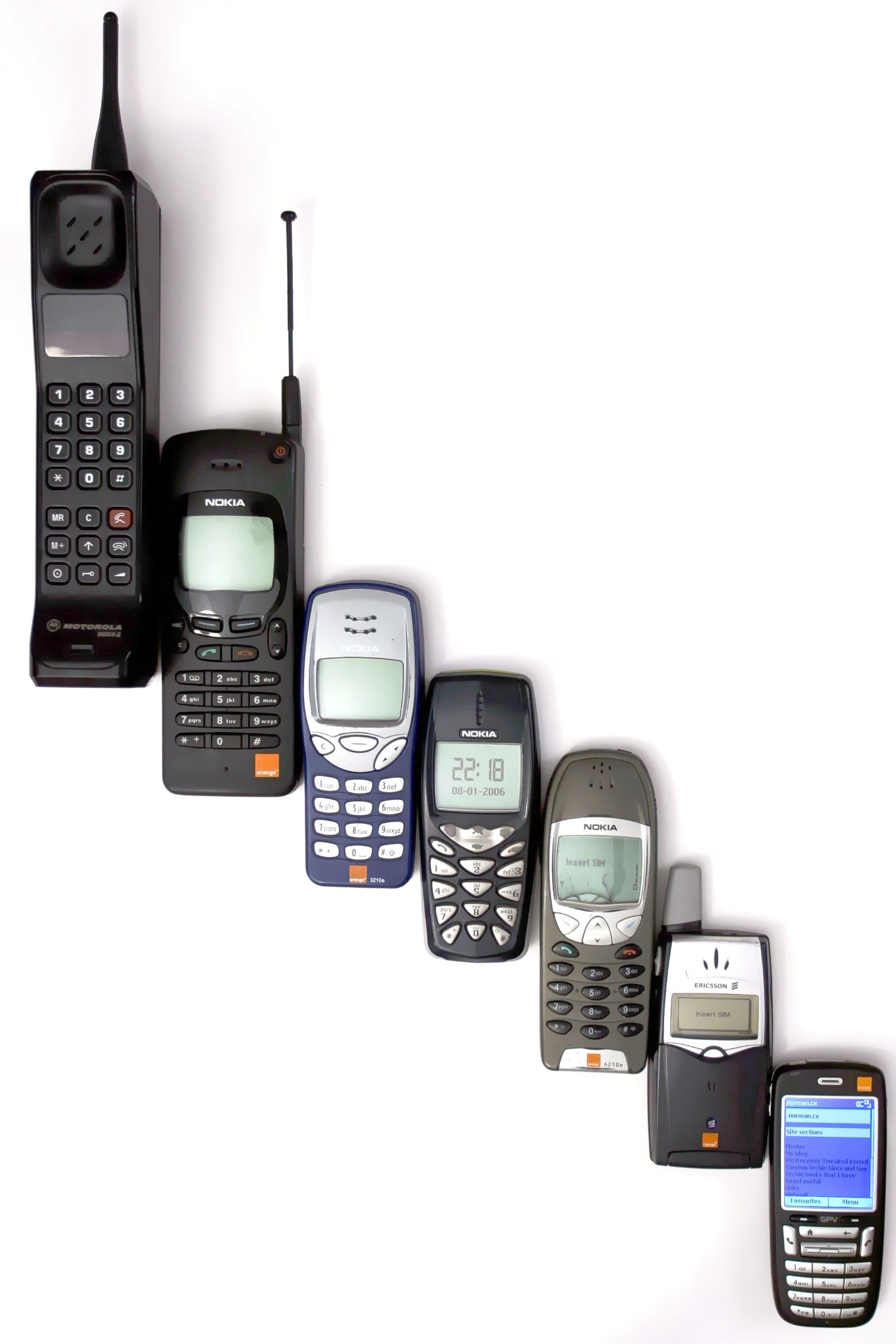Part 4 of 4 Parts (Please read Parts 1, 2, and 3 first)
Cell phones have been targeted in the past with negative publicity about the possible health effects of the radiation that they emit. The frequencies of the cell phone system just happens to be the frequencies that are absorbed by the brain. There is an ongoing debate over studies of the health effects of long term cell phone use. It turns out that the use of a cable to connect an earphone to a cell phone can act as an antenna to concentrate radiation. Bluethooth ear buds raise the question of whether or not the frequencies used for Bluetooth devices could also be a health issue.
Fertilizers used on lawns and flower beds contain a lot of phosphorous. The phosphorous used to make the fertilizer may contain natural uranium which is mildly radioactive. It is possible that some of that uranium could make its way into food grown in fertilized soil. Fortunately, the amount of radiation from such uranium will be too small for significant effects on the people who consume it.
And, finally, your own body contains radioactive materials such as potassium-40, uranium, thorium and carbon-14. The decay of the carbon-14 is used in a procedure called carbon dating to determine the approximate age of human bones.
Throughout this article, I have often said that the amount of radiation from common sources is not generally thought to be a threat to human health. Most of the sources that I have mentioned are small in comparison to the natural background radiation from the uranium in the soil and the incoming radiation from space. That having been said, I should mention something important about the relationship of radiation exposure to health. The natural background radiation we are all exposed to is generally considered to be “safe” in public discourse.
When considering whether or not there is a minimum amount of radiation that can harm human health, it turns out that decades of research have yielded that theory that there is no minimum level of safe radiation exposure and that any amount of radiation, not matter have small, could possibly have an effect on health. This means that the conventional wisdom that any radiation that is less than the natural background is “safe” is simply not true.
The currently accepted scientific theory about the health dangers of radiation exposure is called the “no-threshold linear” model. This means that as radiation exposure increase from zero, there will be a steady linear increase in health threat. Although radiation from common sources may be small compared to background radiation, even so it can increase the possibility of negative health effects. And, as mentioned for some of the sources, there is the danger of accumulation of damaging radiation over time.
While some radiation is inescapable in the form of the natural background radiation, other common everyday sources can be eliminated and should be, especially for vulnerable populations such as babies, small children, the aged and those who already have serious health issues. If a possible common source of radiation exposure is not important to you, it would probably be best to avoid it if at all possible.
Blog
-

Common Everyday Sources Of Radiation – Part 4 of 4 Parts
-
Nuclear News Roundup Sep 03, 2018
The New Jersey Board of Public Utilities gets down to job of deciding which nuclear plants will be subsidized. Njspotlight.com
Central Michigan University team uses cyclotron to help solve nuclear puzzle. Themorningsun.com
Stop nuclear cronyism! Superiortelegram.com
A U.S. arbitration court has rejected a German government petition that said the panel had no right to rule on a damages claim by Sweden’s Vattenfall over a decision to pull out of nuclear power, a newspaper reported. Reuters.com
-

Geiger Readings for Sep 03, 2018
Ambient office = 91 nanosieverts per hour
Ambient outside = 83 nanosieverts per hour
Soil exposed to rain water = 88 nanosieverts per hour
Zuccini from Central Market = 133 nanosieverts per hour
Tap water = 89 nanosieverts per hour
Filter water = 77 nanosieverts per hour
-

Geiger Readings for Sep 02, 2018
Ambient office = 111 nanosieverts per hour
Ambient outside = 126 nanosieverts per hour
Soil exposed to rain water = 122 nanosieverts per hour
Organic avocado from Central Market = 92 nanosieverts per hour
Tap water = 69 nanosieverts per hour
Filter water = 63 nanosieverts per hour
-

Geiger Readings for Sep 01, 2018
Ambient office = 122 nanosieverts per hour
Ambient outside = 116 nanosieverts per hour
Soil exposed to rain water = 119 nanosieverts per hour
Organic avocado from Central Market = 126 nanosieverts per hour
Tap water = 74 nanosieverts per hour
Filter water = 62 nanosieverts per hour
Dover sole – Caught in USA = 129 nanosieverts per hour
-

Common Everyday Sources Of Radiation – Part 3 of 4 Parts
Part 3 of 4 Parts (Please read Parts 1 and 2 first)
Living at a high altitude exposes people to about twice as much charged particles and ultraviolet radiation as people living at sea level. If you are sensitive to ultraviolet radiation, you need to take more precautions if you live in such places as Denver, Colorado.
Granite counter tops are all the rage in fancy homes but they have trace amounts of natural uranium and thorium. One of the decay products of uranium is a radioactive gas called radon which emits both alpha and beta particles as it decays. People are concerned about radon contamination from soil high in uranium and commercial radon detectors are widely available. Fortunately, most of the radon generated by granite counter tops is trapped in the crystal matrix of the rock and poses no health risk.
Grand Central Station in New York City is constructed from granite and has a granite foundation. As with granite counter tops, most of the radon gas generated by the decay of uranium in the granite is trapped in the rock. However, Grand Central Station does emit more radiation in a year that would be allowed in a nuclear power plant. The people passing through the station will not be exposed to much radiation but that would not be true for people who work there. Fortunately, even that level of radiation exposure does not pose serious health problems.
X-rays are an obvious source of high energy electromagnetic radiation that many people are exposed to. Properly calibrated X-ray machines are considered to be relatively safe with respect to radiation exposure. On the other hand, many X-ray machines emit more radiation than allowed by regulations. It is estimated that a single chest X-ray results in radiation exposure that is equivalent to twenty percent of the radiation that a nuclear power plant is permitted to emit in a whole year. Possible health effects from X-rays has to be balanced against the possible benefits of medical diagnosis that might reveal serious medical problems.
Cranial CT scans are frequent diagnostic tools in medicine. They employ a narrow beam of X-rays and subject patients to much more intense electromagnetic radiation that generic X-ray machines. A properly calibrated CT scanner can emit eight times as much radiation as a nuclear power plant is permitted to emit in a year. As with generic X-ray machines, possible health effects from CT scanners have to be balanced against the possible benefits of medical diagnosis that might reveal serious medical problems. And, also as with generic X-ray machines, they must be calibrated properly or they will expose the patient to much higher levels of radiation.
Cigarettes are known to be carcinogenic from the chemical constituents of tobacco as well as additives. Tobacco leaves contain traces of the radioisotope Polonium-210. This radioisotope is a strong alpha particle emitter It is very poisonous and can build up in the lungs and other organs of a chronic smoker and pose an addition threat above and beyond the chemicals in the cigarettes.
Please read Part 4 -

Geiger Readings for Aug 31, 2018
Ambient office = 107 nanosieverts per hour
Ambient outside = 98 nanosieverts per hour
Soil exposed to rain water = 100 nanosieverts per hour
Red bell pepper from Central Market = 100 nanosieverts per hour
Tap water = 69 nanosieverts per hour
Filter water = 64 nanosieverts per hour
